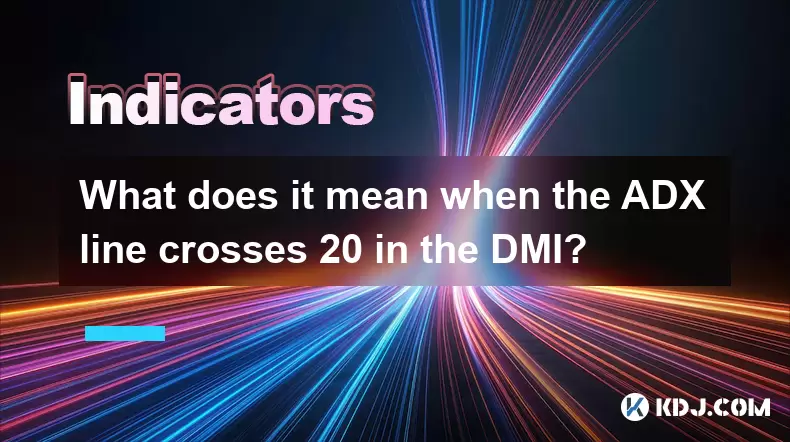-
 Bitcoin
Bitcoin $114800
-0.87% -
 Ethereum
Ethereum $4776
1.26% -
 XRP
XRP $3.035
-0.59% -
 Tether USDt
Tether USDt $0.9997
0.01% -
 BNB
BNB $868.3
-2.21% -
 Solana
Solana $207.8
2.24% -
 USDC
USDC $0.9999
0.00% -
 Dogecoin
Dogecoin $0.2321
-2.70% -
 TRON
TRON $0.3658
1.42% -
 Cardano
Cardano $0.9042
-1.85% -
 Chainlink
Chainlink $25.67
-0.24% -
 Hyperliquid
Hyperliquid $43.96
1.17% -
 Sui
Sui $3.679
-2.11% -
 Stellar
Stellar $0.4091
-1.83% -
 Ethena USDe
Ethena USDe $1.000
-0.01% -
 Bitcoin Cash
Bitcoin Cash $593.4
0.58% -
 Avalanche
Avalanche $25.53
0.89% -
 Hedera
Hedera $0.2476
-1.21% -
 Litecoin
Litecoin $119.7
-1.84% -
 UNUS SED LEO
UNUS SED LEO $9.609
0.34% -
 Toncoin
Toncoin $3.352
-0.91% -
 Shiba Inu
Shiba Inu $0.00001292
-2.45% -
 Uniswap
Uniswap $11.08
-1.13% -
 Polkadot
Polkadot $4.100
-1.09% -
 Cronos
Cronos $0.1609
4.53% -
 Dai
Dai $0.9999
0.00% -
 Bitget Token
Bitget Token $4.706
-0.88% -
 Aave
Aave $350.1
2.03% -
 Monero
Monero $268.0
0.06% -
 Ethena
Ethena $0.7069
-4.77%
What does it mean when the ADX line crosses 20 in the DMI?
The ADX crossing above 20 signals a strengthening trend in crypto markets, but traders must check +DI and -DI for direction and combine with other indicators to avoid false signals.
Aug 13, 2025 at 11:35 am

Understanding the DMI and ADX Components
The Directional Movement Index (DMI) is a technical analysis tool used in cryptocurrency trading to assess the strength and direction of a trend. It consists of three primary lines: the +DI (Positive Directional Indicator), the -DI (Negative Directional Indicator), and the ADX (Average Directional Index). The +DI and -DI help identify the direction of the trend, while the ADX measures the strength of the trend regardless of its direction. Traders use the DMI to determine whether a market is trending or ranging, which is crucial when making decisions in the volatile cryptocurrency space.
The ADX line is derived from the smoothed average of the difference between +DI and -DI over a specified period, typically 14 candles. It ranges from 0 to 100. A higher ADX value indicates a stronger trend, while a lower value suggests a weak or non-existent trend. The most commonly referenced threshold is 20, and when the ADX line crosses above or below this level, it signals a potential shift in market conditions.
Significance of the ADX Line Crossing 20
When the ADX line crosses above 20, it indicates that the market is transitioning from a ranging or consolidating phase into a trending phase. In the context of cryptocurrency trading, this can be a critical signal for traders who rely on trend-following strategies. A cross above 20 suggests that momentum is building and that the current price movement—whether upward or downward—may gain strength. However, the ADX does not indicate direction, so traders must examine the relationship between +DI and -DI to determine whether the trend is bullish or bearish.
Conversely, when the ADX line crosses below 20, it suggests that the trend is weakening and the market may be entering a consolidation or sideways phase. This is particularly relevant in cryptocurrency markets, where sharp rallies or dumps can quickly give way to choppy price action. Traders may use this signal to exit trend-based positions or switch to range-bound strategies such as scalping or mean reversion.
How to Interpret the ADX Crossover in Practice
To effectively use the ADX crossover at 20, traders should follow these steps:
- Apply the DMI indicator to the price chart of a cryptocurrency pair (e.g., BTC/USDT) using a trading platform like TradingView or MetaTrader.
- Ensure the default settings are used: 14-period for ADX, and confirm that +DI and -DI are visible.
- Monitor the ADX line closely as it approaches the 20 threshold.
- When the ADX line crosses above 20, check whether +DI is above -DI for a potential bullish trend, or -DI is above +DI for a bearish trend.
- Wait for confirmation, such as a candle closing beyond a recent swing point, before entering a trade.
- If the ADX line crosses below 20, consider reducing exposure to trend-following strategies and prepare for possible sideways movement.
This process helps traders avoid false signals, especially in highly volatile crypto markets where short-term spikes can temporarily push ADX above 20 without sustaining a real trend.
Combining ADX with Other Indicators
While the ADX crossover at 20 is useful, it becomes more powerful when combined with other technical tools. For example:
- Use moving averages (such as the 50-period and 200-period EMA) to confirm the overall trend direction.
- Apply support and resistance levels to identify key price zones where a trend might accelerate or reverse.
- Incorporate volume indicators like OBV (On-Balance Volume) to validate whether the trend has strong buying or selling pressure behind it.
- Pair with RSI or MACD to detect overbought or oversold conditions that may affect trend sustainability.
In cryptocurrency trading, where price action can be driven by news and sentiment, using ADX in isolation may lead to misleading signals. A multi-indicator approach increases the reliability of the ADX 20 crossover signal and reduces the risk of entering trades during fakeouts.
Common Misinterpretations of the ADX 20 Crossover
A frequent misunderstanding is assuming that an ADX crossing above 20 automatically means a bullish move is imminent. This is incorrect. The ADX only measures trend strength, not direction. A rising ADX with -DI above +DI could indicate a strong downtrend, which is bearish. Traders must always cross-reference the DI lines to determine the actual trend direction.
Another misconception is treating the ADX crossing below 20 as a reversal signal. It is not. It simply means the trend is losing momentum. The price could continue moving in the same direction, just more slowly, or it could enter a consolidation phase. Assuming a reversal based solely on ADX behavior can lead to premature entries.
Additionally, in low-liquidity altcoin markets, the ADX may fluctuate rapidly around 20 due to erratic price swings. This noise can generate false signals. Therefore, higher timeframes (such as 4-hour or daily charts) are generally more reliable for interpreting ADX crossovers than lower ones like 5-minute or 15-minute.
Practical Example Using a Cryptocurrency Chart
Consider a scenario on the ETH/USDT 4-hour chart:
- The ADX has been below 20 for several days, indicating a sideways market.
- Suddenly, the ADX line rises and closes above 20, while the +DI line crosses above -DI.
- At the same time, Ethereum breaks above a key resistance level at $1,850 with increased volume.
- This confluence of signals suggests a potential start of a bullish trend.
- A trader might enter a long position with a stop-loss below the recent swing low and target the next resistance zone.
Later, if the ADX begins to decline and drops back below 20, while price moves in a tight range between $1,900 and $1,930, it signals weakening momentum. The trader may then choose to take profits or tighten the stop-loss.
Frequently Asked Questions
What does it mean if the ADX crosses 20 but the +DI and -DI lines are tangled?
When the +DI and -DI lines are intertwined near the ADX crossover at 20, it suggests indecision in the market. Even if ADX rises above 20, the lack of clear directional dominance means the trend may lack conviction. Traders should wait for a clean separation between +DI and -DI before acting.
Can the ADX 20 crossover be used on all timeframes?
Yes, the ADX 20 crossover can be applied to any timeframe, but its reliability varies. On lower timeframes (e.g., 5-minute), it may produce frequent false signals due to market noise. Higher timeframes like the 1-hour or daily provide more robust signals, especially for swing or position traders.
Does the ADX crossing 20 guarantee a profitable trade?
No, the ADX crossing 20 is not a standalone guarantee of profitability. It only indicates increasing trend strength. Profitable trading requires additional confirmation from price action, volume, and other indicators, along with proper risk management.
How often does the ADX cross 20 in major cryptocurrencies like Bitcoin?
In highly volatile assets like Bitcoin, the ADX can cross 20 multiple times per week during strong price movements. During consolidation phases, it may remain below 20 for extended periods. Monitoring it over time helps identify recurring patterns in trend development.
Disclaimer:info@kdj.com
The information provided is not trading advice. kdj.com does not assume any responsibility for any investments made based on the information provided in this article. Cryptocurrencies are highly volatile and it is highly recommended that you invest with caution after thorough research!
If you believe that the content used on this website infringes your copyright, please contact us immediately (info@kdj.com) and we will delete it promptly.
- Viral Memes, RWA Platforms, and DePIN Crushers: What's Hot in Crypto?
- 2025-08-24 14:45:20
- Meta's Hypernova Glasses: AR's Next Big Thing?
- 2025-08-24 15:05:15
- Down Under Showdown: Australia vs. South Africa in ODI Cricket
- 2025-08-24 15:10:14
- XYZVerse, Shiba Inu, and the 2025 Bull Cycle: A Meme Coin Evolution
- 2025-08-24 13:05:12
- WLFI Token, BingX, and the Trading Landscape: A New York Perspective
- 2025-08-24 12:45:20
- Aave, Governance, Allocation: Navigating DeFi's Shifting Sands
- 2025-08-24 12:45:20
Related knowledge

What does it mean when the +DI and -DI cross frequently in the DMI indicator but the ADX is flattening?
Aug 11,2025 at 03:15am
Understanding the DMI Indicator ComponentsThe Directional Movement Index (DMI) is a technical analysis tool composed of three lines: the +DI (Positive...

What does the sudden appearance of a "dark cloud cover" candlestick pattern during an uptrend indicate?
Aug 13,2025 at 11:35am
Understanding the 'Dark Cloud Cover' Candlestick PatternThe dark cloud cover is a bearish reversal pattern in technical analysis that typically appear...

What does it mean when the moving average, MACD, and RSI all send buy signals simultaneously?
Aug 11,2025 at 01:42pm
Understanding the Convergence of Technical IndicatorsWhen the moving average, MACD, and RSI all generate buy signals at the same time, traders interpr...

What does it mean when both the KDJ indicator and the RSI show overbought signals simultaneously?
Aug 13,2025 at 11:35am
Understanding the KDJ Indicator in Cryptocurrency TradingThe KDJ indicator is a momentum oscillator derived from the Stochastic Oscillator, widely use...

What does it mean when the price is trading above the SAR indicator but the red dots are densely packed?
Aug 09,2025 at 11:49pm
Understanding the SAR Indicator and Its Visual SignalsThe SAR (Parabolic Stop and Reverse) indicator is a technical analysis tool used primarily to de...

What does it mean when the candlestick chart forms a "Morning Star" but trading volume is sluggish?
Aug 12,2025 at 06:28pm
Understanding the Morning Star Candlestick PatternThe Morning Star is a three-candle bullish reversal pattern commonly observed in cryptocurrency pric...

What does it mean when the +DI and -DI cross frequently in the DMI indicator but the ADX is flattening?
Aug 11,2025 at 03:15am
Understanding the DMI Indicator ComponentsThe Directional Movement Index (DMI) is a technical analysis tool composed of three lines: the +DI (Positive...

What does the sudden appearance of a "dark cloud cover" candlestick pattern during an uptrend indicate?
Aug 13,2025 at 11:35am
Understanding the 'Dark Cloud Cover' Candlestick PatternThe dark cloud cover is a bearish reversal pattern in technical analysis that typically appear...

What does it mean when the moving average, MACD, and RSI all send buy signals simultaneously?
Aug 11,2025 at 01:42pm
Understanding the Convergence of Technical IndicatorsWhen the moving average, MACD, and RSI all generate buy signals at the same time, traders interpr...

What does it mean when both the KDJ indicator and the RSI show overbought signals simultaneously?
Aug 13,2025 at 11:35am
Understanding the KDJ Indicator in Cryptocurrency TradingThe KDJ indicator is a momentum oscillator derived from the Stochastic Oscillator, widely use...

What does it mean when the price is trading above the SAR indicator but the red dots are densely packed?
Aug 09,2025 at 11:49pm
Understanding the SAR Indicator and Its Visual SignalsThe SAR (Parabolic Stop and Reverse) indicator is a technical analysis tool used primarily to de...

What does it mean when the candlestick chart forms a "Morning Star" but trading volume is sluggish?
Aug 12,2025 at 06:28pm
Understanding the Morning Star Candlestick PatternThe Morning Star is a three-candle bullish reversal pattern commonly observed in cryptocurrency pric...
See all articles

























































































